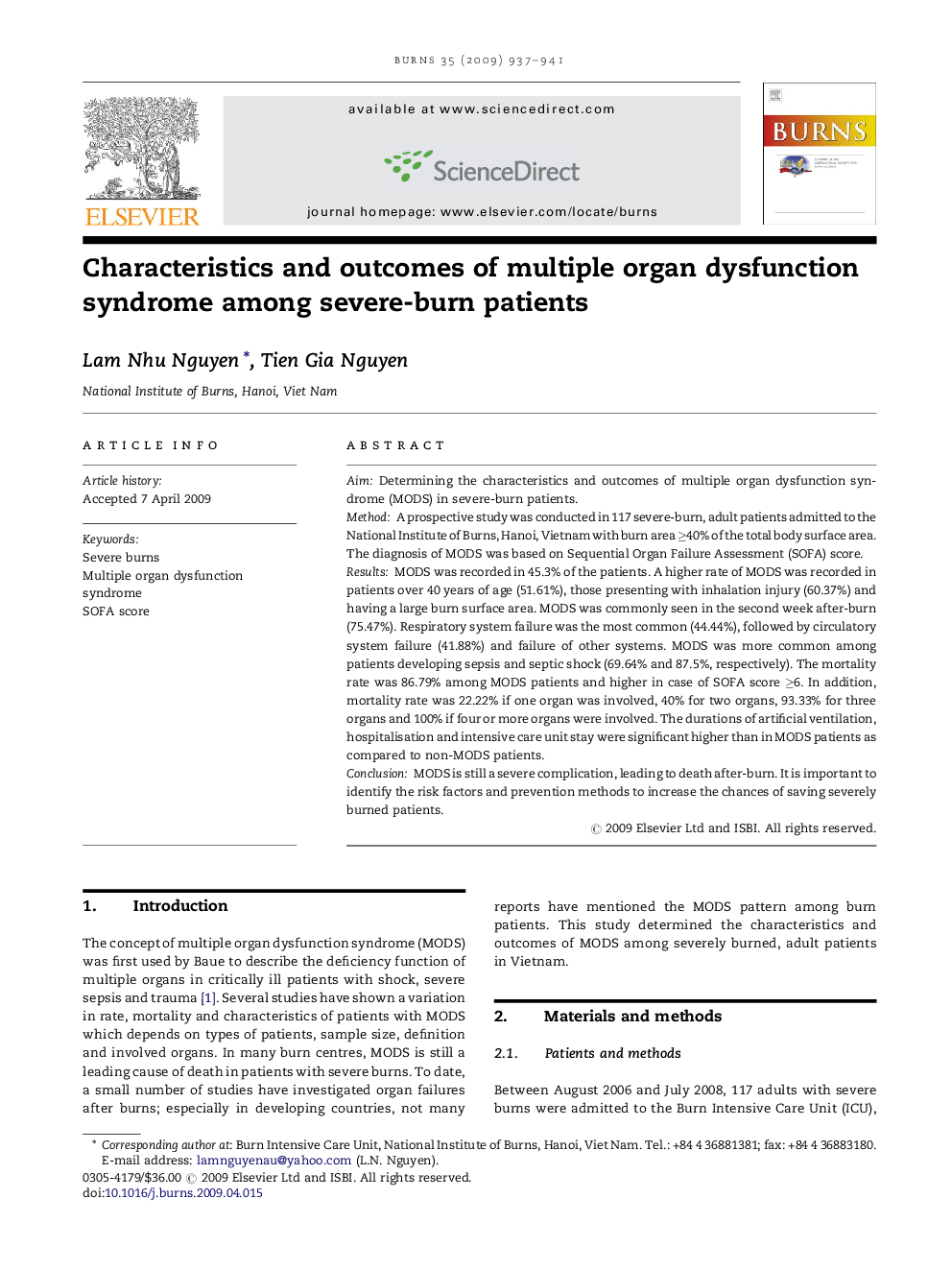| Article ID | Journal | Published Year | Pages | File Type |
|---|---|---|---|---|
| 3105746 | Burns | 2009 | 5 Pages |
AimDetermining the characteristics and outcomes of multiple organ dysfunction syndrome (MODS) in severe-burn patients.MethodA prospective study was conducted in 117 severe-burn, adult patients admitted to the National Institute of Burns, Hanoi, Vietnam with burn area ≥40% of the total body surface area. The diagnosis of MODS was based on Sequential Organ Failure Assessment (SOFA) score.ResultsMODS was recorded in 45.3% of the patients. A higher rate of MODS was recorded in patients over 40 years of age (51.61%), those presenting with inhalation injury (60.37%) and having a large burn surface area. MODS was commonly seen in the second week after-burn (75.47%). Respiratory system failure was the most common (44.44%), followed by circulatory system failure (41.88%) and failure of other systems. MODS was more common among patients developing sepsis and septic shock (69.64% and 87.5%, respectively). The mortality rate was 86.79% among MODS patients and higher in case of SOFA score ≥6. In addition, mortality rate was 22.22% if one organ was involved, 40% for two organs, 93.33% for three organs and 100% if four or more organs were involved. The durations of artificial ventilation, hospitalisation and intensive care unit stay were significant higher than in MODS patients as compared to non-MODS patients.ConclusionMODS is still a severe complication, leading to death after-burn. It is important to identify the risk factors and prevention methods to increase the chances of saving severely burned patients.
